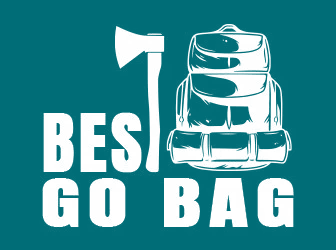Back in December, I heard neighbors, co-workers and weather forecasters say the same thing. Over and over again.
It went something like this. “I can’t believe how mild the winter has been so far.” In fact, Colorado broke a long-standing record for least amount of snow.
The Midwest came very close to the same thing. And in the East they were counting their blessings. Due to the lack of nor’easters.
But then on January 1 – just in time to start the new year off on the wrong snowshoe – the situation changed dramatically.
Storms Ring in New Year
One headline predicted the onslaught of extreme winter weather like this. “Snow, Ice, Flooding and Severe Storms Will Ring in 2022.” They certainly got that right.
A meteorologist said, “This is a classic storm set up with rain and thunderstorms across the South. (Plus) a line of ice near the storm’s track. And an area of heavy snow in the colder air to the north of the low pressure.”
In other words, few Americans escaped the carnage. Wind gusts in Colorado were over 110 miles per hour. That’s where fires destroyed hundreds of homes.
The Plains and Midwest got four to eight inches of snow. And sustained winds of 25 mph. Temperatures plummeted. Tornadoes were spawned in several areas.
18 States Get Snow
The winter storm deposited snow in 18 different states. Icy roads led to countless accidents.
Of course, results were what you’d expect. Power outages affecting more than 1 million homes and businesses. Downed trees. Closed roads. Thousands of flights cancelled. School and federal office closings. Store shelves emptying.
Meanwhile, folks in much of the eastern portion of the country were enjoying near-record warm temperatures. But that was about to change.
Cold air and snow rushed into the Mid-Atlantic states. As you saw on the news, thousands of drivers were stuck on a 50-mile stretch of I-95 in Virginia. Some for more than 24 hours. Much of the area received 10 to 15 inches of snow.
Not to be left out, the Northwest got its share of snow. And gusty winds, drifts and automobile crashes. Especially in Washington and Oregon.
Frigid Temps Plague the North
Fast forward several days. Now it was the Northeast’s turn to feel the brunt of winter weather. As below-zero temperatures rolled in, forecasters predicted a “bomb cyclone.”
That term is used when a storm’s central pressure drops 24 millibars in 24 hours. Think of it as a winter hurricane.
Nobody in Buffalo, New York needed a fancy phrase for what it experienced. According to the National Weather Service, the Buffalo airport established a record for January 6 snowfall with more than 14 inches.
A foot of snow swept across parts of Maine, Connecticut, Rhode Island and Massachusetts. Moving west, it was minus-59 degrees in Bowbells, North Dakota. Parts of Minnesota and Wisconsin had wind chills of 25-35 degrees below zero.
At Least Two More Months of This
At this point you may be thinking, how is this different from previous years? Unfortunately, it’s not much different. Every year much of the country gets extreme winter weather. Which causes a multitude of problems.
It’s true that the weather is becoming more extreme. And violent storms are becoming more frequent. But they occur every winter. And we still have at least two more months of winter weather ahead of us.
If you have to be out and about during these storms, you know how dangerous they can be. And even if you are able to hunker down until the worst passes, there are still problems to deal with.
One of those issues can be a lack of food. Perhaps you won’t be able to leave your home. And maybe deliveries will be delayed or even cancelled.
Ready.gov Provides Advice
It’s very important to have a robust food stockpile ready and waiting for you. Ready.gov tells us that, “winter storms create a higher risk of car accidents, hypothermia (and) frostbite. (As well as) carbon monoxide poisoning and heart attacks from overexertion.”
They recommend knowing your risks for extreme winter weather. And paying attention to weather reports, watches and warnings. Plus signing up for your community’s warning system.
Preparing your home with insulation, caulking and weather stripping is also encouraged. And installing smoke alarms and carbon monoxide detectors. As well as learning how to keep pipes from freezing.
And, of course, gathering supplies to sustain you for several days. Including food and water. Plus flashlights, extra batteries, medications, etc. Not to mention items for your pets.
Stock Up on Survival Food
One of the most important preparedness components is food. My suggestion for your stockpile is the 3-Month Survival Food Kit from 4Patriots.
We’ve sold out of this popular Kit several times. Fortunately, it’s now back in stock. This kit includes more food and calories than in the past. As well as new recipes.
There are 688 servings in the 3-Month Kit. That means 135,440 calories. Plus 10 FREE gifts. Including free shipping. And an interest-free payment plan option.
Under proper storage conditions, this kit has a 25-year shelf life. It will show up on your front porch in convert, stackable storage totes.
Extreme winter weather is not over yet. Not by a long shot. But you can achieve peace of mind with this food stockpile. Because you’ll be prepared for the next winter storm.


